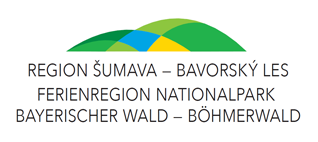Gabreta
The findings of cleaved chert dating back to the Mesolithic period (9 600 – 5 500 years BC) around Modrava, Březník, or Křemelná by Stodůlky prove that Šumava was already lively as early as tens of thousands of years ago. But these people were not permanent settlers, they merely travelled here in the summer, drawn in by ripe forest fruits, hazelnuts and fish.
The 2011 findings of hundreds of shards from the early La Tène culture in the Křemelná valley by Frauenthal but another Celtic settlement on the map of Šumava. This settlement was plane, of an agricultural type. It most likely served as base for local gold-panners and probably lied on a trade route, later called Vintířova. Other Celtic settlements in Šumava include Sedlo by Albrechtice, Kouklovna by Velhartice, Věnec by Čkyně or by the Bavarian Lichtenau.
Even the name of the local mountain range, Gabreta, comes from the Celtic era. Who even knows which area the historians and geographers of old meant when they spoke of Gabreta?
When the Greek geographer Strabo wrote his seventeen volume Geography in 18 AD, he mentioned an area called Gabreta settled by the Marcomanni people. More than a century later, the Macedonian Claudius Ptolemy drew a map of the known world in Alexandria. In the commentary to this map, he repeatedly mentions the Gabreta forest. Its location is said to be below the Sudetenland or surrounding the Marcomanni settled area from the north. The origin of the word Gabreta is near impossible to trace back today. One possibility is that it comes from the Celtic word gabro, meaning capricorn, but also goat or sheep. Another is the distortion of the word querquetum (or querqueta = oak forest) by these ancient authors. In Bohemian literature, the term Gabreta forest first appears in the works of an exile Pavel Stránský in his 1634 work Respublica Bohemiae. A little later the name is used by the Jesuit Bohuslav Balbín in his works. The name Šumava is already also used by then and Balbín relates the term Gabreta not only to it but to the whole range of border mountains from Chebsko through Sušice towards the southeast. During the course of the century the name Gabreta is also given to Novohradské Mountains, the Třeboň basin, or the Kleť mountain. These authors must have taken the name from those already mentioned.
The area settled by Celts and later the Marcomanni was home to capricorns (who live in the Alps even today), sheep, and goats. All of these served as models for artistic depictions of animals. The capricorn was later considered an iconic animal in the Alps region. Parts of its body, mainly the undigested remains known as bezoar balls, were used as ingredients in medicine or alchemy. It is possible that this was the case if the Celtic era as well. Translating the name Gabreta as Forest of capricorns is a bit misleading as capricorns do not live in forests.
Whether the name Gabreta comes from capricorns or oak forests can only be argued about today and its origin and location can thus be explained only hypothetically.
